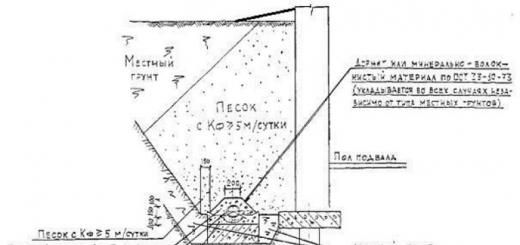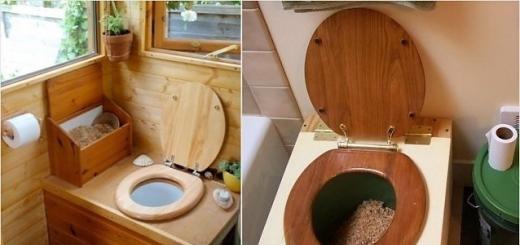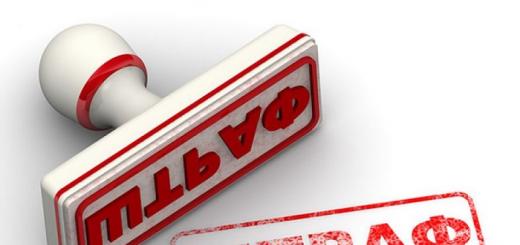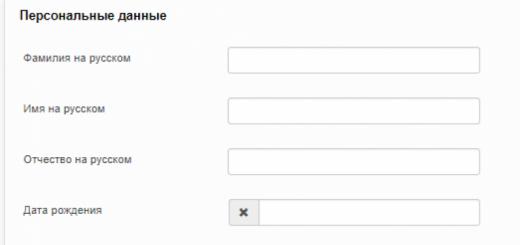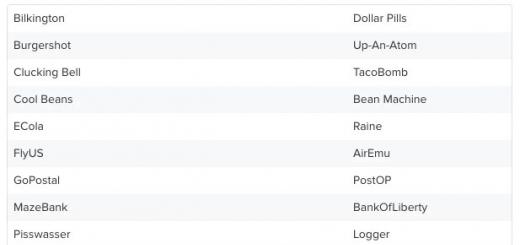Romania is a member state of the European Union.
The national currency of Romania is the Romanian leu, which is divided into 100 bani. The issuing bank is the National Bank of Romania. In cash circulation in the country there are banknotes in denominations of 1.5, 10, 50, 100, 200 and 500 lei. Banknotes issued since 2005 are made only on a polymer basis.
Lei was introduced by a law of April 14, 1867, when Romania, which was under Turkish rule, adopted a national monetary system, similar to the system of the Latin Monetary Union (formally, Romania was not part of this union). The leu was equal to the gold French franc. From 1867 to 1890, two currencies circulated in parallel in Romania - Romanian lei and French francs. Since 1890, the Romanian leu has become the only national currency.
After liberation from fascist occupation, the country was carried out monetary reform- from August 15 to August 22, 1947 Old banknotes were exchanged for lei of the 1947 model at a ratio of 20,000: 1.
From January 28 to 31, 1952, the second currency reform was carried out - the exchange of banknotes for lei of the 1952 model. The first thousand lei were exchanged at a ratio of 100: 1, the second and third thousand - 200: 1 and amounts over 3 thousand old lei - 400 : one.

In 2005, a monetary reform was carried out, as a result of which 1 new leu ( RON- ROmanian New Leu) replaced 10,000 old lei (ROL - before the 2005 reform - ROL, ROmanian Leu). Non-denominated banknotes everywhere with denominations issued in 2005 were in circulation until December 31, 2006. In the future, they were gradually withdrawn from the money circulation.

The design of the new banknotes celebrates the following general principles: on the front side there is a flower growing in Romania and a portrait of a Romanian cultural figure, on the back side there is a drawing of a building or a famous monument. All banknotes are printed on plastic and polymer, each in its own color (light green for 1 lei, light purple for 5 lei, light pink and light orange for 10 lei, yellow for 50 lei, blue for 100 lei, dark orange - 200 lei, and light gray - 500 lei). On November 14, 2008, the National Bank of Romania announced the release of a modified 10 lei banknote. The new design involves the use of offset printing.

On the front side of the 200 lei banknote, 150 by 82 mm in size, there is a portrait of the philosopher Lucian Blaga. On the back, on the left side, there is an image of an ancient statue "The Thinker from Hamandjiya". The statue was found on the territory of Romania, it is about 8000 years old. In the center of the reverse side there is an image of an old water mill. The bill does not have a watermark, because the portrait of Lucian Blaga and the abbreviation "BNR" are printed on the banknote using a technique that imitates a watermark. The banknote is equipped with a security strip passing to the left of the center, and a golden iridescent strip 18 mm wide, which is located on the back of the bill to the right of the center. Primary colors are yellow, green and brown
New Romanian leu - national currency unit Romania, introduced on July 1, 2005 by exchanging old lei for new ones at a ratio of 10,000:1. Bank code: RON, written as L or lei. One leu is equal to 100 bani. Banknote denominations in circulation: 1, 5, 10, 50, 100, 200, 500 lei. Coin denominations: 1, 5, 10, 50 bani.
Formally, the leu as a monetary unit appeared on the territory of the future Romania in 1856, when the Bank of Moldova issued banknotes denominated simultaneously in lei and piastres (in Romanian and French). However, they are not widely used. Domnitor (prince) Carol I (formerly known as Carl Eitel Friedrich Ludwig von Hohenzollern-Sigmaringen), who came to power in Romania in 1866, introduced a new monetary system in the country a year later, based on the bimetallic standard and its own currency called "Leu" . However, until 1878, the Russian ruble remained the main currency in the country, and the French franc also circulated. Only since 1890, the leu has become the only legal national currency on the territory of Romania. From 1914, Romania untied the leu from the gold standard. Between the world wars, the leu was pegged to US dollar(successively decreasing). During the alliance with Nazi Germany, the leu was pegged to the German Reichsmark, and during the Soviet occupation, to the ruble.
In 1947, a confiscatory monetary reform was carried out, during which 20,000 old lei were exchanged for 1 new lei within narrow limits: for different categories of citizens, the limit ranged from 1.5 million old lei per person to 7.5 million old lei per peasant farm (With additional conditions). Legal entities could get new currency in exchange for the old one in the amount of the salary fund for one month. In 1952, the second confiscation reform took place, during which different amounts in 1947 lei were exchanged for new lei at different rates. Lei 1952 lasted until 2005 (banknotes changed appearance over time).
In the period from the early 1990s to the mid-2000s, Romania experienced massive inflation, as a result of which the leu fell significantly in price: in 1999, a 1 million lei note was put into circulation. To simplify settlements, in the period from July 2005 to the end of December 2006, the denomination of the national currency took place in Romania with the introduction of the “new leu” at the exchange rate of 10,000:1.
On the front side of the Romanian banknotes, figures of science and culture of the 19th-20th centuries are depicted:
1 lei - Nicolae Iorga, historian, writer, politician;
5 lei - George Enescu, composer;
10 lei - Nicolae Grigorescu, artist;
50 lei - Aurel Vlaicu, aviator;
100 lei - Ion Luca Caragiale, writer, playwright;
200 lei - Lucian Blaga, philosopher, translator, playwright;
500 lei - Mihai Eminescu, poet.
The reverse side of the banknotes depicts various buildings and monuments related to the respective cultural figures, except for the 50 lei banknote, which depicts a drawing of an airplane and an eagle's head.
Romanian "paper" money is actually made of plastic. An interesting feature: all banknotes have a transparent "window" in the form of a symbol related to the field of activity of people whose portraits are depicted on the front side (successively from the smallest denomination to the largest): heraldic sign, musical key, brushes and palette, eagle, theater mask, fountain pen and hourglass. The size of banknotes exactly corresponds to the size of euro bills. This was done deliberately so that when Romania switches to the euro in 2015, it would be easier to reconfigure banknote counters.
From the beginning of 2009 to April 2013, the exchange rate of the leu against the euro was in the range of 4–4.5 lei per euro, inflation in the country is relatively low – 4–8% per year.
The monetary unit of Romania stands out among European currencies for its quality. Banknotes are not made from paper, but from a polymer that has a number of advantages. Polymer money is difficult to fake or spoil. Banknotes do not sink, do not deteriorate from washing, do not crumple and do not tear. Many incredulously check it themselves with small denominations, crumpling them in their hands and watching how the banknote straightens, taking on its former shape.
The history of the emergence of modern currency
The modern name "lei" remains from the currency introduced in the spring of 1867 as a counterbalance to the franc of France. Prior to that, on the territory of present-day Romania, the money of Byzantium and the Roman Empire was used, since the fourteenth century, coins of neighboring states were used: Hungary, the Czech Republic, Bulgaria, as well as Venetian and Genoese banknotes.
Romanians printed the first banknotes (ducats) in 1853, namely the leu appeared in April 1867. At the same time, it was decided to introduce its fractional part - baths, in each lei there are 100 baths. For more than two decades, the new lei was used along with the francs. Only in 1890 was it decided that the leu was the only currency in Romania.
Ups and downs of the Romanian leu
In the course of the conquests of the territory of Romania by other states, the lei was often tried to be replaced by other banknotes. For example, after the First World War, the leu coexisted with kroons, and its rate was pegged at a ratio of 1:2.
Another scourge that has overtaken the Romanian leu more than once is depreciation. During the currency reforms, the leu lost 2-4 zeros, but this did not stop it from falling. This continued until 2005: on the first day of July, new polymer banknotes were put into circulation, exchanging each new leu at a rate of 1:10,000. More than ten years have passed, and the exchange rate of the Romanian currency is quite stable. After latest reform the international abbreviation for leu has also changed: the old ROL has replaced RON.
Euro and other currencies in Romania: what to carry and where to change
Despite the fact that the country joined the European Union in 2007, only lei are officially used in the territory. On the road, it is most profitable to take euros or dollars, the European currency has a slightly better rate. Another advantage of the euro is that they are rarely accepted in tourist places. For example, European banknotes can be taken as a payment for a hotel and in some souvenir shops. You shouldn’t count on it, it’s better to change the brought currency to the local Romanian one.
Buy lei ( National currency Romania) can be in banks, exchange kiosks (AMANET), hotels. Most reliable way- bank. It is worth considering that in the city center, especially near popular tourist routes, the rate can be underestimated. And be sure to ask about the availability and size of the commission for the exchange.

Romanian leu exchange rate
In mid-spring 2016, the Romanian currency has the following ratio with other currencies:
- 1 USD = 3.96 RON (for every Romanian leu they give 0.25 US dollars);
- 1 EUR = 4.48 RON (for every Romanian leu they give 0.22 euros);
- 1 GBP = 5.62 RON (for every Romanian leu they give 0.18 pounds sterling);
- 1 BGN = 2.29 RON (for every Romanian leu they give 0.44 Bulgarian leva);
- 1 RUB = 0.06 RON (16.85 Russian rubles are given for each Romanian leu);
- 1 UAH = 0.16 RON (for every Romanian leu they give 6.42 Ukrainian hryvnias).
This is the official rate, the figure will differ by several percent, depending on the place of exchange and the commission.
What does the Romanian currency look like?
Now Romanians use denominations of 1, 5, 10, 50, 100, 200 and 500 Romanian lei. Banknotes have an unusual appearance and significantly differ in touch from other banknotes due to the fact that they are made on a polymer basis. The monetary unit of Romania is well protected from counterfeiting. This includes embossed printing, microtext, metallized thread, and microperforation. When you change the angle of view and translucence, drawings with combined colors will become visible, additional images will appear, the colors of some inscriptions and the degree of gloss will change.

The banknotes themselves are very interesting: on the obverse, images of Romanians famous in science and art are combined with flowers. The reverse shows landmarks or cultural properties often associated with the figure depicted on the front. Sometimes there are additional elements indicating the type of activity of the person indicated in the portrait. For example, on 5 lei the composer Enescu and the Bucharest concert hall are depicted, both sides of the bill are supplemented with notes. The artist Grigorescu and one of his paintings are immortalized on 10 lei, a brush is painted near the portrait.
The design of Romanian coins is very concise. On the one hand, the denomination is indicated, on the second, the coat of arms and the name of the country, plus the year of minting. Initially, 1, 5, 10 and 50 bani were issued, but prices are often rounded up to 0.1 lei, so coins of 1 and 5 bani are almost out of circulation.

The transition of Romania to the euro is planned, but postponed until at least 2019.
Do you organize deliveries of goods to Romania and you always need to know at what rates the sale and purchase of the local currency RON is carried out? Are you interested in the exchange rate of the new Romanian leu for today, because you are going to this country? This issue can be easily and quickly resolved using a resource that describes the real exchange rate of the Central Bank of the Russian Federation, determined for today, as well as for tomorrow and for given date. It is here that you will find the exchange rate of the new Romanian leu, which has been formed by the National Bank for the current time, and you can also find out what the dynamics of this currency is (using the chart and the numerical values of its fluctuations given on the site) and the forecast for it in the near future.
It is also here that you can find out what the exchange rate of the new Romanian leu has been against the ruble over the past few months. To do this, you just need to contact the local archive, which stores the official exchange rate of the new Romanian leu of the Central Bank of the Russian Federation, indicate the date you are interested in, and in a few minutes you will receive the values you are interested in. Please note that the resource uses only the official rate that can be used for economic calculations.
How to convert new Romanian leu to rubles with a converter?
Before contacting an exchanger to buy currency, use the online calculator. To do this, enter the right amount in the converter field and you will get the final value in the selected currency.
Official currency in Romania: lei. In some cases, you can pay in euros (€).
As in Romania, in neighboring Moldova, the local currency is also called lei, but it differs in appearance. Often in conversation, "Romanian lei" is used to differentiate.
Currency in Romania
Prices for many services and goods are indicated in euros. The use of this currency is especially common in Bucharest and resort towns. In addition to the euro in Romania, US dollars ($), Moldovan lei, Ukrainian hryvnia and Bulgarian leva are unofficially accepted for payment, but, with the exception of the dollar, only in the areas bordering these countries.
How much money to take to Romania
Romania is a country where you can have an inexpensive vacation. You won't be able to spend a lot of money in Romania; people don't come here for shopping or for an exotic or "luxury" vacation.
The most expensive in Romania are Bucharest, the popular seaside resort of Constanta, and Transylvania.
To understand how much money to take to Romania, you need to plan your trip before the trip and roughly calculate the expenses.
Approximate prices in Romania
- Lunch in an inexpensive cafe: 20-30 lei (230-350 rubles)
- Loaf of bread: 2-3 lei (25-35 rubles)
- Bottle of wine: 12-20 lei (140-230 rubles)
- Milk package: 4 lei (45 rubles)
- Cheese on the market (1 kg): 16-20 lei (180-230 rubles)
- A pack of cigarettes: 11-15 lei (125-180 rubles)
- A liter of gasoline: 5-6 lei (60-70 rubles)
Bank cards in Romania
Bank cards in Romania are accepted in major cities and tourist areas with virtually no restrictions. This applies to large stores, shopping centers and supermarkets. In small shops, even in Budapest, credit cards basically not accepted. The most common cards are American Express, MasterCard, Dinners Club and Visa.
It is wise enough to put some money on bank card before the trip, and pay for large purchases. Cash withdrawals from ATMs and bank branches are subject to a fee depending on the bank.
Currency exchange in Romania
You can change currency in Romania at exchange offices and banks located at airports, train stations, large shops, hotels and popular tourist places. In Romanian, exchange offices are called casa de schimb. Receipts for exchange and other transactions with money are best kept before leaving the country.
In addition to official exchange offices, there are “money changers” on the streets, it is strongly not recommended to exchange money with them, in order to avoid fraud.
Working hours of currency exchange offices: 09:00-12:00, 13:00-15:00
In the city center and in tourist areas, the opening hours of exchange offices can be extended until 16:00.
Banks of Romania
Banks in Romania are mostly private, and most of the banks in the country are foreign - Austrian Erste, Raiffeisen, Volksbank, Greek - Alpha, Piraeus. Also in Romania Societe Generale and Unicredit.
The Central Bank of Romania - Banca Națională a României is not engaged in banking activities, but only regulates it within the country.
Banking hours in Romania: Mon-Fri 09:00-12:00
As a rule, Saturday and Sunday are non-working days for most banks, with the exception of a small number of offices open in tourist areas and central city streets.
Traveler's checks in Romania
Traveler's checks in Romania are accepted only in major bank branches, preference is given to those issued in euros. In many banks, employees do not have experience in exchanging such checks, therefore, refusals to carry out such operations are possible.
Tipping in Romania
Tipping in Romania is not customary. However, due to the large influx of tourists who do not know about this, tips are increasingly accepted in cafes, restaurants, hotels and taxis.
You can leave 5-10% of the cost of service in a good restaurant or hotel, rounding up the bill is also allowed. Tipping in taxis is not required, but will be greatly appreciated.
